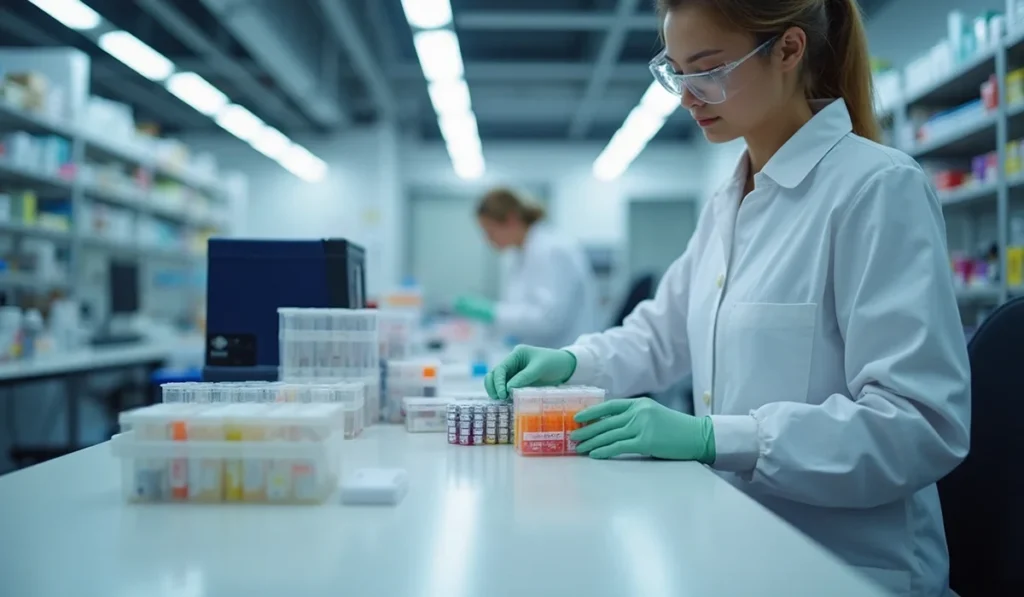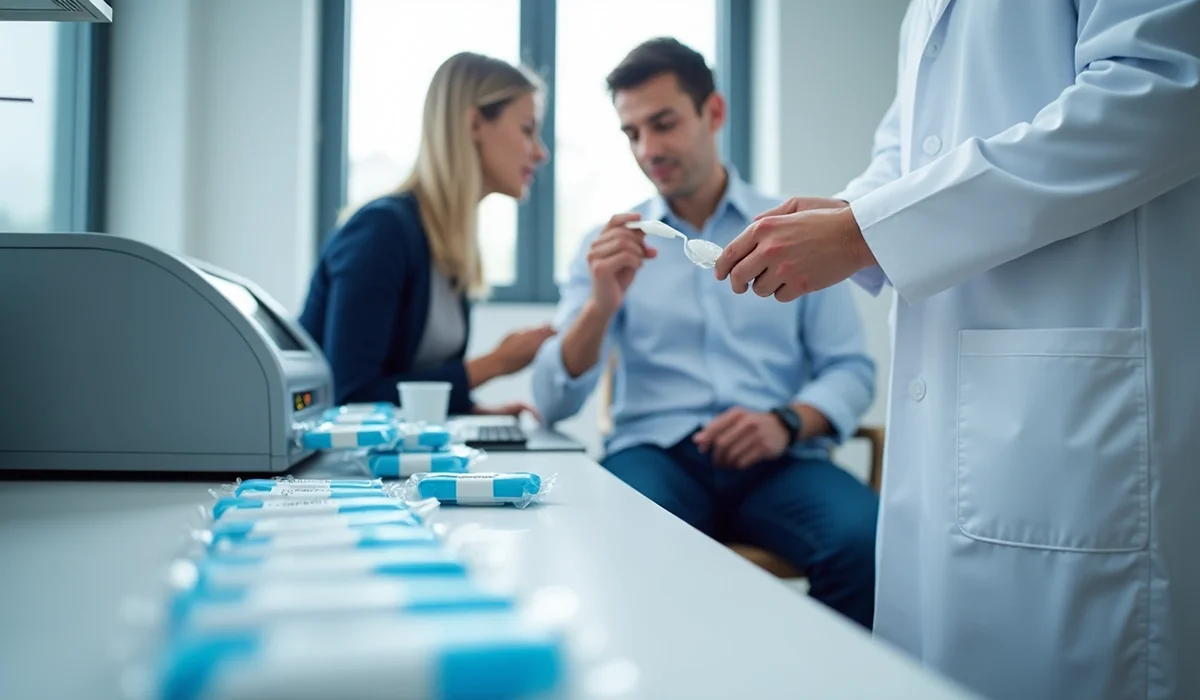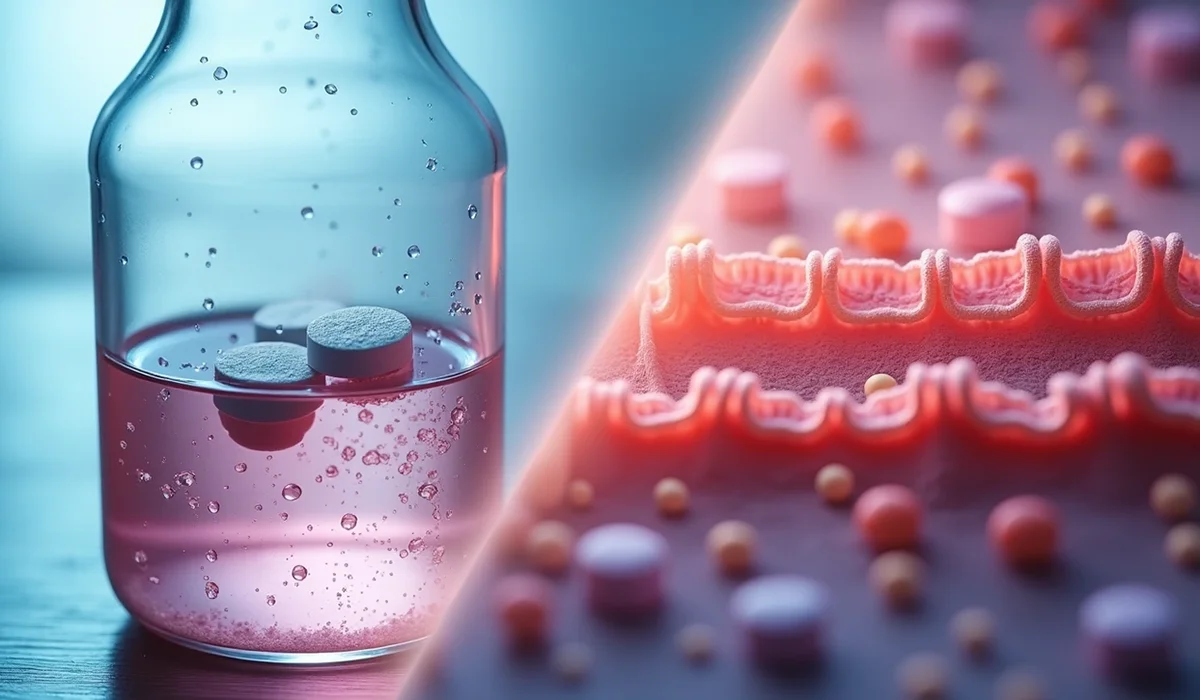The drug screening market shows remarkable growth and will likely jump from $5.0 million in 2023 to $8.8 million by 2033. This substantial expansion at a 6% CAGR shows the growing need for reliable testing solutions as substance abuse cases continue to rise. Recent statistics reveal that 48.5 million Americans aged 12 and older struggled with substance use disorder in 2023.
Several factors drive this impressive market growth. Government regulations play a vital role, especially in the U.S., where the drug testing market hit $992.57 million in 2024. New technology has transformed testing capabilities, while public awareness has highlighted the need for detailed drug screening statistics. The cannabis segment led the U.S. market with a 57.32% revenue share in 2024, which shows how specific substances influence drug screening trends. Public safety concerns and substance abuse rates accelerate this market’s growth, with alcohol-impaired drivers being responsible for almost 30% of all traffic-related deaths in the U.S.
Global Drug Testing Market Reaches $8.8M Target
Recent industry reports show the global drug screening market has hit a major milestone with $8.8 million in targeted investment funds [1][2]. Market valuations now range from $6.45 billion to $13.91 billion in 2024 [3][4]. These numbers highlight the sector’s economic value and potential for growth.
What is driving the surge in demand?
Several connected factors explain the drug screening market’s remarkable growth. The worldwide rise in substance abuse has created an urgent need for better testing solutions. Latest statistics reveal that 296 million people used drugs in 2021 – about 5.8% of the global population aged 15-64. This marks a big jump of 23% from 240 million users in 2011 [4].
The rising alcohol consumption poses major public health challenges. The World Health Organization reports that alcohol and substance use cause over 3 million deaths yearly. About 400 million people worldwide suffer from alcohol use disorders [4]. These alarming numbers have led to:
- Tougher workplace safety rules, especially in transportation and construction
- Better law enforcement protocols for roadside testing
- Broader healthcare programs to monitor substance use
- More parental and educational awareness programs
State-of-the-art technology speeds up market growth. New testing methods like rapid screening devices, advanced lab tests, and point-of-care solutions have boosted accuracy [3]. The Biden-Harris Administration’s recent $45.1 million award to expand substance use disorder services shows strong government backing for this crisis [4].
The economic effects of substance abuse drive investment in testing. Workplace drug positivity rates hit a 20-year peak at 4.6% in 2021. This shows a 31.4% rise from the 2010-2012 low [3]. These numbers prove why we need detailed drug screening programs to create safer workplaces and boost productivity.
How does this compare to previous years?
The drug screening market grows faster now than ever before. Market analysts expect yearly growth rates between 4.1% and 16.7% through the early 2030s [5][4]. This rapid expansion shows growing global awareness about substance abuse issues.
Regulatory compliance used to be the main growth driver. Now we see a radical shift toward active testing programs for public safety and health. California’s Assembly Bill 1013 in 2024 proves this point. The bill requires 2,400 bars and clubs to provide drink-spiking drug test kits [3]. This opens new possibilities beyond standard workplace testing.
Regional patterns have changed too. North America led with a 40.18% market share in 2023 [4]. The Asia-Pacific region now grows the fastest thanks to better healthcare systems and stronger regulations [4]. This shows how the market has spread globally compared to past years.
Road safety concerns push testing demands higher. U.S. alcohol-impaired driving crashes took 13,384 lives in 2021 – a worrying 14% increase from the previous year [4]. These numbers sparked more roadside drug testing. The U.S. roadside drug testing market alone reached $1.17 billion in 2023 [6].
The drug screening landscape keeps changing as new technology, regulations, and public health needs come together to tackle worldwide substance abuse challenges.
Technological Advancements Transform Drug Screening
State-of-the-art technologies have altered the map of drug screening market. These advances bring better accuracy, convenience, and user acceptance. The market shows impressive growth and tackles reliability and testing compliance issues better than before.
AI and machine learning improve test accuracy
AI applications have transformed drug screening processes, especially in drug discovery and development. AI-discovered drugs in Phase I clinical trials show success rates of 80-90% compared to traditional methods at 40-65% [7]. These numbers highlight AI’s ability to find compounds with better drug-like properties.
Machine learning algorithms look at complex biological datasets to find disease-causing targets like proteins or genes. This makes target validation faster and more reliable [8]. DeepMind’s AlphaFold protein structure database has changed how we predict protein structures, which helps discover new treatments [8].
AI integration in screening protocols brings several benefits:
- Better precision when identifying potential drug candidates
- Lower costs and faster development pipeline
- Better safety profile predictions with fewer adverse event risks
- Better clinical trial protocols and patient grouping
Machine learning tools now make discovery and decision-making better, though they work best with specific questions and quality data [9].
Point-of-care testing gains traction
Point-of-Care Testing (POCT) has become a breakthrough in drug screening. Medical professionals define it as clinical laboratory testing done near patient care sites [10]. This concept started in England during the 1950s as “near-patient testing” and evolved to its current form in the early 1980s [10].
SoToxa Mobile Test System shows this progress well. Law enforcement uses this handheld device with oral fluid swabs to detect drugs within five minutes [11]. Officers can spot THC, cocaine, opioids, amphetamine, methamphetamine, and benzodiazepines quickly to remove impaired drivers from roads [11].
POCT’s popularity comes from several benefits:
- Quick results for immediate decisions
- Better access in settings of all types
- Lower costs with fewer laboratory needs
- Better patient engagement through quick feedback [12]
Technology’s miniaturization has helped develop POCT, with research focusing on smaller yet more accurate devices [10]. The World Health Organization created ASSURED Guidelines as key criteria for effective point-of-care testing [10].
Non-invasive methods improve user compliance
Drug screening market now uses better non-invasive testing methods that boost user acceptance and compliance. Paper spray mass spectrometry analyzes molecules in fingerprints. It detects substances as they move through sweat with 99% accuracy [13].
Fingerprint-based drug testing beats traditional methods:
- Sample collection takes under a minute [14]
- Results come within 10 minutes [14]
- No chance of sample switching or tampering
- Tests identity and substances at once [13]
Research from the University of Surrey and University of Groningen found that finger sweat testing matches blood sampling when monitoring tuberculosis medications [1]. Tests work best 1-6 hours after taking medicine, detecting isoniazid 96% of the time and acetyl isoniazid 77% of the time [1].
Other non-invasive options gaining ground include saliva testing with watched collection to prevent cheating, and sweat patch testing that spots drugs longer than blood or urine screenings [2]. These methods balance accurate testing with user comfort and dignity.
These technological advances keep pushing the drug screening market toward better efficiency, reliability, and use across sectors of all types.
Industry Segments Expand Across Products and Services
The drug testing industry has split into multiple product categories and service offerings. Key sectors show dramatic growth. Market players are ready to tap into growing demand as regulatory requirements and substance abuse concerns rise worldwide.
Testing devices and analyzers lead market growth
Consumables currently lead the market with 34.6% revenue share in 2024 [15]. These essential items like reagents, columns, kits, calibrators, specimens, and test strips play a vital role in accurate confirmation testing. Rapid testing devices show exceptional promise with projected growth at 6.3% CAGR through 2030 [16]. These devices deliver instant results without labs or trained technicians [15]. They offer several benefits over traditional methods:
- Better field testing performance
- Quick results in under five minutes
- Easy operation for regular users
- Budget-friendly when bought in bulk [6]
Urine and saliva remain top testing methods
Urine samples dominate the global drug testing market with 77.7% share in 2024 [15]. This high percentage comes from urine’s proven track record in detecting illegal substances. Both the Department of Health and Department of Transportation endorse this method [15]. Urine analysis remains the go-to choice for federal testing requirements [17].
Oral fluid testing emerges as the fastest-growing option with 7.7% projected CAGR [15]. This growth comes from its easy collection process, lower tampering risk, and better detection of recent drug use [15]. More organizations choose oral fluid tests when they suspect sample tampering. Law enforcement particularly likes this method for roadside drug checks [18].
Workplace and police drive market demand
Workplace testing leads market growth as companies focus on employee safety and productivity [15]. Organizations of all sizes now screen employees before hiring and during employment. They aim to maintain drug-free workplaces, reduce accidents, and boost performance [15]. The transportation sector grows steadily at 6.7% CAGR due to strict safety rules for drivers [17].
Law enforcement has become a major market player. Recent Supreme Court rulings support mandatory testing for safety-critical roles [19]. Police departments now rely heavily on quick testing tools for faster decisions [6]. This trend grows as drug abuse expands globally. Authorities now look for cost-effective screening methods that give immediate practical results [6].
Regional Markets Respond to Regulatory Pressure
Drug screening markets worldwide show distinct patterns based on each region’s regulatory requirements. These compliance needs shape how markets grow and how widely testing gets adopted.
North America maintains leadership with strict mandates
North America leads the drug screening market with 52.25% market share in 2023 [4]. Strict workplace drug testing laws and a 30-year old healthcare system drive this dominance. The United States enforces testing through Department of Transportation (DOT) and Substance Abuse and Mental Health Services Administration (SAMHSA) guidelines [5]. The Omnibus Transportation Employee Testing Act of 1991 requires testing for safety-sensitive transportation employees [20]. Recent data reveals almost 49 million Americans aged 12 and older struggled with substance use disorder in 2022 [21].
Asia-Pacific sees fastest growth amid rising abuse rates
The Asia-Pacific drug screening market shows remarkable growth at 6.42% CAGR [4], making it the world’s fastest-growing region. The market value stands at $1.59 billion in 2023 [22] and should reach $2.21 billion by 2030 [22]. Rising substance abuse rates, tougher workplace safety rules, and better awareness of drug-related health risks fuel this expansion [4]. China, India, and Australia now enforce stricter screening policies in businesses, law enforcement, and schools [17]. The United Nations Office on Drugs and Crime reports a surge in methamphetamine use across Southeast Asia [4].
Europe balances privacy with compliance
Europe faces unique drug screening challenges due to privacy protection laws. The General Data Protection Regulation (GDPR), active since May 2018 [3], limits how companies gather and handle personal data, including drug test results. GDPR requires explicit consent or a “clearly permissible purpose” [3] to collect data. Safety concerns can justify workplace testing when they outweigh personal privacy rights [3]. European companies must conduct privacy impact studies and maintain clear policies about handling sensitive personal data [3]. This creates a testing environment that respects both safety and privacy needs.
Key Players Accelerate Innovation and Partnerships
Drug screening market leaders are building strategic collaborations and launching new products to stay ahead of their competition. The growing demand has pushed these companies to adapt to new ways of detecting and monitoring substance abuse.
Quest Diagnostics and Omega Labs expand offerings
Quest Diagnostics has launched an 88-compound test panel for psychoactive substances [23]. This new panel uses advanced testing methods to spot novel psychoactive substances (NPS) in patients. The company’s expansion helps tackle the drug epidemic with better detection capabilities. Omega Laboratories has also grown its operations. The company invested $5 million in its US-based headquarters and quadrupled its hair drug testing capacity to over 44,000 square feet [24]. With ISO/IEC 17025 accreditation, Omega serves more than 6,000 corporate, government, and court-based clients worldwide [25]. This makes them a leader in alternative specimen testing.
Cannabix breathalyzer integration changes THC testing
Cannabix Technologies and Omega Laboratories have created a revolutionary partnership in cannabis detection through breathalyzer technology [26]. Omega will be the exclusive provider of laboratory services for Cannabix’s THC breathalyzer [27]. This new technology brings several key advantages over traditional methods:
- Detects THC in breath after smoking and eating edibles [8]
- Works in the low picogram range [7]
- Needs only five breaths compared to 10+ with older methods [8]
- Spots THC just hours after use instead of days or months [26]
Omega’s scientists have confirmed a test method that can detect and tell the difference between delta-9 THC, delta-8 THC, CBN, and CBD [7]. This gives employers and law enforcement unique accuracy in testing.
M&A activity combines market share
Strategic acquisitions have reshaped the drug screening sector. DISA Global Solutions bought CastleBranch’s screening and compliance services in March 2024 [28]. This purchase deepened DISA’s commitment to healthcare and academic sectors. The industry has seen other major deals too. Laboratory Corp of America acquired Medtox Scientific for $245 million [29], and Northlane Capital Partners bought United States Drug Testing Laboratories [30]. These companies want to expand their services, grow their market presence, and get specialized testing technologies that help address new substance abuse challenges.
Conclusion
Looking Ahead: The Future of Drug Screening
The drug screening market sits at a crucial crossroads where technology breakthroughs, regulatory compliance, and public health needs meet. Market growth from $5.0 million to $8.8 million by 2033 shows both financial potential and society’s recognition of worldwide substance abuse challenges.
Substance abuse rates keep pushing market growth upward. About 48.5 million Americans faced substance use disorders in 2023. Workplace safety concerns speed up adoption, especially after positivity rates hit a 20-year peak at 4.6% in 2021. While traditional testing stays common, new fingerprint-based methods and oral fluid sampling offer better accuracy and protect user dignity.
Technology has changed testing abilities dramatically. AI shows 80-90% success rates in finding drugs compared to 40-65% with traditional methods, which proves how machine learning is changing the field. Point-of-care testing has gained ground with devices like SoToxa that can spot multiple substances in five minutes and help make quick decisions.
The market looks different across regions. North America holds its 52.25% market share through tight regulations. The Asia-Pacific region grows fastest at 6.42% CAGR. European markets face unique challenges as they balance GDPR privacy rules with safety needs.
Leading companies form strategic collaborations and invest to meet these changing needs. Quest Diagnostics’ 88-compound test panel and Omega Laboratories’ $5 million facility expansion show how companies react to market needs. Omega and Cannabix Technologies’ breakthrough partnership brings new cannabis detection through breathalyzer technology that can spot recent use.
The drug screening market will keep changing as substance abuse patterns shift, rules get stricter, and technology improves. Companies that welcome both breakthroughs and compliance will be ready to tackle this vital public health challenge while grabbing significant market chances ahead.
References
[1] – https://www.bioanalysis-zone.com/using-a-fingerprint-for-non-invasive-drug-monitoring/
[2] – https://drug-screen.com/latest-news/alternate-samples-used-for-drug-testing/
[3] – https://blog.cansfordlabs.co.uk/workplace-drug-testing-gdpr-law
[4] – https://www.snsinsider.com/reports/drug-testing-market-5705
[5] – https://www.grandviewresearch.com/industry-analysis/us-drug-abuse-testing-services-market-report
[6] – https://drugtestsinbulk.com/blog/the-escalating-demand-for-rapid-drug-testing-in-policing-enhanced-solutions-for-law-enforcement/?srsltid=AfmBOooCQhJfvU4pNXBbQmUmlcOcGY0rIqT5WAHmgPwUB77_ZiZAb7qB
[7] – https://cannabixtechnologies.com/investors/news-releases/cannabix-technologies-and-omega-laboratories-inc-provide-positive-developments-on-marijuana-breathalyzer-testing/
[8] – https://cannabixtechnologies.com/investors/news-releases/cannabixs-msbs-marijuana-breathalyzer-technology-detects-thc-in-breath-after-edibles-consumption/
[9] – https://www.nature.com/articles/s41573-019-0024-5
[10] – https://www.ncbi.nlm.nih.gov/books/NBK592387/
[11] – https://www.abbott.com/corpnewsroom/products-and-innovation/roadside-drug-screening–best-of-2019.html
[12] – https://identifydiagnostics.com/blog/what-is-point-of-care-testing-in-drug-detection/
[13] – https://drugabuse.com/blog/new-drug-testing-technology-makes-urine-samples-a-thing-of-the-past/
[14] – https://www.intelligentfingerprinting.com/drug-testing/
[15] – https://www.grandviewresearch.com/industry-analysis/drug-testing-market
[16] – https://www.grandviewresearch.com/horizon/statistics/drug-testing-market/product/rapid-testing-devices/global
[17] – https://www.grandviewresearch.com/industry-analysis/employer-workplace-drug-testing-market-report
[18] – https://www.globenewswire.com/news-release/2025/04/17/3063573/0/en/Drug-Screening-Market-Size-Worth-USD-10-34-Billion-by-2034-CAGR-of-4-84-from-2025-to-2034.html
[19] – https://www.ojp.gov/ncjrs/virtual-library/abstracts/update-drug-and-alcohol-screening-law-enforcement-personnel
[20] – https://www.fmcsa.dot.gov/regulations/drug-alcohol-testing/overview-drug-and-alcohol-rules
[21] – https://www.transparencymarketresearch.com/drugs-of-abuse-testing-market.html
[22] – https://www.grandviewresearch.com/horizon/outlook/drug-screening-market/asia-pacific
[23] – https://www.grandviewresearch.com/industry-analysis/drug-screening-market-report
[24] – https://www.biospace.com/omega-laboratories-quadruples-hair-drug-testing-capabilities
[25] – https://www.omegalaboratories.com/about-omega/partner-with-omega
[26] – https://www.omegalaboratories.com/about-omega/news/Omega-Laboratories-Partners-with-Cannabix-Technologies
[27] – https://www.prnewswire.com/news-releases/omega-laboratories-partners-with-cannabix-technologies-inc-for-marijuana-breath-detection-302149002.html
[28] – https://disa.com/news/disa-global-solutions-completes-strategic-acquisition-of-castlebranch-healthcare-compliance-and-screening
[29] – https://aadrugtesting.com/labcorp-to-buy-rival-medtox-for-245-million/
[30] – https://www.bglco.com/press-release/bgl-announces-the-sale-of-united-states-drug-testing-laboratories-inc-to-northlane-capital-partners/





